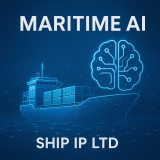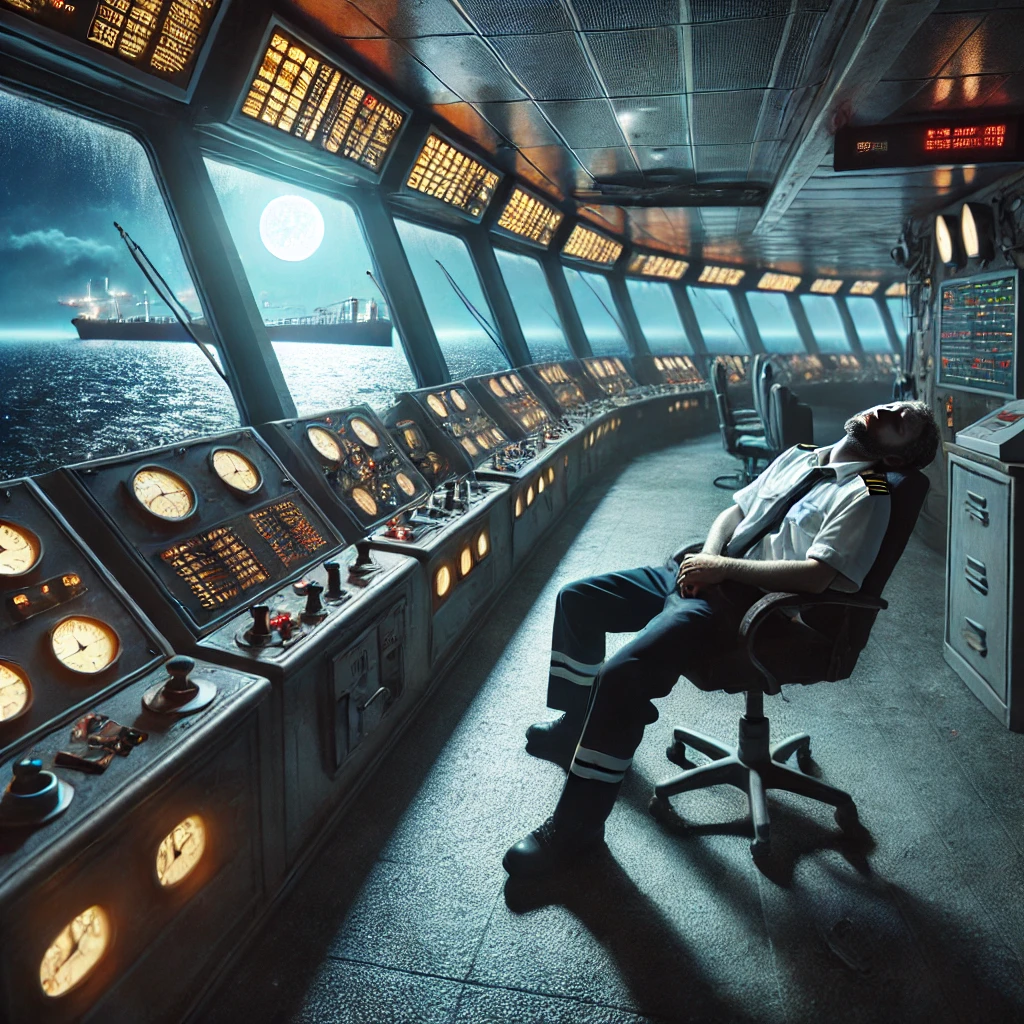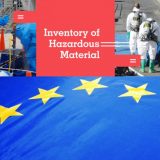General cargo ship NAM THINH 126 issued distress signal at around noon Jun 22, being anchored at Hon Dau Anchorage, Hai Phong. The ship reported heavy portside list, danger of capsizing, 8 crew and 2 passengers going into life rafts. NAM THINH 126 was en route from Quy Nhon to Hai Phong with cargo of stones, she was caught in heavy swell while anchored, understood there was cargo shift, which caused capsizing and sinking. All 10 people were rescued. There are reportedly, some 153 tons of fuel on board, crew managed to seal off fuel tanks and fuel pipes before abandoning the ship, no leak reported so far.
Passenger ro-ro ship ANDROS QUEEN suffered fire in the morning Jun 21 at Perama Ship Repair Yard, Piraeus, in aft area, probably in engine room. Fire was extinguished by joint efforts of 2 SAR ships, 5 fire engines and crew, no injures reported, extent of damages unknown. The ship is undergoing repairs to be refitted for ferry services, since Apr 2022.
June 27, 2022 VRP
The order for the trio was placed in May 2022 at China Merchants Jinling (Weihai) Shipyard for delivery in 2024 and 2025.
The vessels will be long-term chartered to Brittany Ferries for its Portsmouth to St Malo/Caen routes. Wärtsilä claims the combined benefits of hybrid propulsion and shore power brings up to 15% savings in greenhouse gas emissions compared to conventional diesel mechanical propulsion.
The ships will operate on either LNG or battery power from the Leclanché’s Navius MRS-3 energy storage system, which claims size and weight advantages over comparable marine batteries.
Wärtsilä was already contracted to supply the main and auxiliary engines, gearboxes, controllable pitch propellers (CPPs), thrusters, fuel gas supply system, Nacos navigation and automation as well as integrated control alarm and monitoring systems for the vessels.
Per Westling, Managing Director, Stena RoRo, said: “Stena wants to be a frontrunner in decarbonising our fleet and, together with our partners, pushing developments towards zero emission operations. Hybridisation allows our vessels to be highly flexible as we adapt to future technology developments, including green fuels, fuel cells, bigger batteries, and solar or wind supported propulsion.”
Christophe Mathieu, Brittany Ferries CEO, said: “Hybrid technology continues to move our fleet renewal programme forward and will follow the introduction of two LNG-powered ships. From day one of operation, ports like St Malo in France and Portsmouth in the UK will benefit from these cleaner hybrid vessels. Shore-side power capability means further benefits will be realised, as investment by ports in plug-in infrastructure allows.”
Håkan Agnevall, President & CEO, Wärtsilä , said: “The extensive battery size will allow the vessels to operate with full power, using both propellers and all thrusters to manoeuvre emissions-free in and out of ports, even in bad weather. The built-in shore power solution will charge the batteries while berthed.”
June 27, 2022 INTERTANKO
RETIRED Vice Admiral Rene Villena Medina tendered his resignation as executive director of the STCW Office of the Maritime Industry Authority (Marina) on Friday (June 17).
In a letter to President-elect Ferdinand Marcos Jr., Medina said he resigned to give way to the new administration, adding that he already completed his tasks for the STCW Office.
“With the feeling of having accomplished nearly all the goals that I have set to do for this organization and to give way to your incoming administration, I am now tendering my courtesy resignation at the Marina, as the executive director of the STCW Office,” he said.
He believes he is leaving the office with a legacy of dignity and integrity that is expected of a public servant. “I am confident that the next in line can expect a smooth turn-over of all documents and responsibilities. It has been my pleasure and honor to serve this government, especially to be of service to our Filipino seafarers who continuously sail the seven seas.”
“May this courtesy resignation take effect upon approval,” Medina said.
Medina was appointed as executive director of the STCW Office on March 30, 2021. At that time, he was tasked to ensure the Philippines’ full compliance with the International Convention on Standards of Training, Certification and Watchkeeping (STCW) Convention, 1978, as amended.
Before his appointment, he served as the commander of the naval forces in Western Mindanao, the largest naval operating command in the country for two years.
In the earlier years of his career, Medina served the Philippine Coast Guard (PCG) in different capacities.
He was the port state control officer of South Harbor Manila, and the commander of the Sealift Amphibious Force and commander of Naval Education and Training Command.
Medina received the esteemed Order of the Lapu-Lapu, which was personally awarded to him by President Duterte. The Order of the Lapu-Lapu is a national order of merit granted to those who have exhibited an extraordinary standard of service in their respective positions.
Press Release: Lloyd’s Register (“LR”), a global provider of maritime professional services, has acquired OneOcean, a leading supplier of voyage compliance, safety and environmental solutions, from Equistone Partners Europe (“Equistone”), a leading European mid-market private equity firm.
This move will accelerate LR’s ambitions to be the maritime industry’s trusted adviser for compliance, safety, performance and sustainability solutions, enabling clients to benefit from more efficient, cleaner & safer operations.
The pedigree of OneOcean will expand and considerably complement LR’s existing digital solutions, including fleet management (Hanseaticsoft) and vessel performance and optimisation (i4Insight, C-MAP Commercial and Greensteam) portfolios.
OneOcean solutions are currently used by more than 16,000 vessels to support and optimise compliance, safety and environment, increasing transparency and simplifying complex regulations and tasks to enable teams to work more transparently for efficiency and enhanced decision making.
OneOcean was created by the merger of ChartCo, in which Equistone first invested in 2016, and Marine Press in 2019. With Equistone’s support, OneOcean has changed and grown rapidly, with four acquisitions, two divestments, a merger and a complete cultural change from product distributor to leading-edge software solutions provider.
LR Group CEO Nick Brown said: “The acquisition of OneOcean propels LR to the position of a leading digital player in the maritime industry enabling clients to make better commercial day-to-day decisions, reducing risks, improving operation efficiencies and critically meeting complex maritime regulatory requirements. We recognise that there has never been a more pressing need for specialist maritime advisers to guide and support clients through the fundamental changes they face, helping to define the route to compliance, operational efficiency, sustainability and competitive agility. With this acquisition, LR will be an even more valuable partner to our clients.”
Martin Taylor, CEO of OneOcean said: “We are really looking forward to working with Nick and his team to create a catalyst for change in an industry that needs to adapt as rapidly as when coal replaced sails. OneOcean has grown phenomenally over the last 20 years to be a clear market leader, now joining the LR family provides a fantastic home for the next chapter of growth. Together we have the scale, reputation and expertise – combining both digital and advisory capabilities – to meet the challenges faced by the industry. This is an exciting move for OneOcean, LR and the wider maritime community.”
Tim Swales, Partner at Equistone, said: “This business has undergone remarkable transformation and growth over the past six years, since we first invested in ChartCo and then supported the formation of OneOcean through the merger with Marine Press. Martin and his team have built a high-quality business that is in the vanguard of the marine industry’s shift towards digital solutions, and it has been a pleasure to work with them. In Lloyd’s Register we are confident we have found the right partner to support OneOcean through this next stage of its growth.”
The deal is subject to regulatory clearance and is expected to be complete by the end of the summer.
Back in March, it was reported that sanctions against Russia due to its war in Ukraine were affecting ports across the entirety of Europe, with many backlogs, disruptions, and looming threats. Perhaps no port was more affected than the Port of Rotterdam in the Netherlands, where hundreds of shipping containers all of a sudden were stranded at the port, filled with imports or exports that were banned under the European Union’s sanctions again Russia. By the beginning of April, when the Russia-Ukraine war had continued for over a month, the hundreds of stranded containers became thousands.
Since March, the problem has worsened as the war has continued and China was forced to lockdown due to Covid.
Now, further issues at the Port of Rotterdam threaten to complicate the global supply chain again. This time, the issue is mainly with empty containers. As reported by Bloomberg.com, empty containers are getting stuck at the Port of Rotterdam, as shipping carriers are focusing more on undelivered goods from containers that were not yet opened and delivered. Due to that policy, empty containers are being pushed to the back of the line.
The main issue with neglecting empty containers at the Port of Rotterdam is that the containers are not able to make their way back to Asian countries and their respective ports. However, these empty containers are needed as there has been a global container shortage for some time now and Asian countries have a backlog of goods that need to be exported and shipped out. Without the containers to ship these goods, they stay at Asian ports and further the overall supply chain delays plaguing the world.
The shortage of shipping containers worldwide is even worse in China, after that country locked down again throughout the spring.
China, which has continued to adopt a zero-Covid policy, even as the contagious Omicron variant changed the game for containment efforts, locked down major cities including Shanghai and Ningbo, earlier this year. Those lockdowns have created an even-worse backlog of goods than the rest of the world is experiencing. Indeed, U.S. consumers have felt the effects with some goods like furniture, housewares, clothing, etc. backordered for months in some cases.
The situation at the Port of Rotterdam is not helping. There were already fewer voyages by shipping carriers from Shanghai and other Chinese port cities to Western countries due to the lockdowns. Delays at Rotterdam are complicating matters. At the moment, it is unclear when the situation will get better. Port officials at the Port of Rotterdam have refused comment, while the Chinese government has fully reopened Shanghai. Now, shippers must wait and see if the backlog eases or if someone takes action.
The supervisory board of Port of Tallinn decided to invest up to EUR 53 million to build a new 310-meter quay with a 10-hectare area beyond the quay in Paldiski South Harbour, according to the company’s release. The investment is co-financed by European Commission in the amount of EUR 20 million through the military mobility project EstMilMob, which aims to improve transport connections to Tapa over the next five years. The quay and hinterland area will be completed in summer 2025.
The new quay with the beyond area to be built in Paldiski South Harbour is necessary not only for military purposes but also to increase the maritime transport capacity of goods and vehicles. Due to the favorable location of Paldiski South Harbour, the construction of the new quay will create preconditions for Port of Tallinn to become an important partner in the construction and subsequent maintenance of offshore wind farms in the Baltic Sea region. The new quay will ensure the capacity of the port to receive high-draft special-purpose vessels for the construction of offshore wind farms and the transport of wind turbine components. The large rear area beyond the quay allows various preparations for the manufacture and storage of generators and wind turbine blades before being loaded on a ship. In addition, the new quay can be used to service ro-ro vessels if required.
Port of Tallinn is currently negotiating with several largest European wind farm builders to establish a construction and maintenance port for offshore wind farms of the neighboring region in the Paldiski South Harbour. The wind farms to be built in the area plan to start production in 2028, preceded by a 3-year construction period of the wind farms. The positive impact of the investment on the operating volumes and turnover of Port of Tallinn is expected from 2025 after the completion of the quay, but as negotiations with developers are still ongoing, it is currently not possible to assess the financial impact on Port of Tallinn in more detail.
In the latest twist for the international sanctions against Russian entities and their impact on the shipping industry, the recently relaunched expedition cruise line Swan Hellenic is finding itself forced to bid for its newest cruise ship just weeks before its scheduled entry into service. The 10,600 gross ton SH Vega, which Helsinki Shipyard is referring to simply as Hull No 517 is being sold “as is” and “where is” with bids due by this Friday, June 24.
The SH Vega is a sister ship to the SH Minerva which was delivered to the cruise line in late 2021 as part of an effort to restart the brand which dated back to the 1950s and is considered one of the pioneers in expedition and educational travel. The sister ships, along with a third large cruise ship still under construction, were financed by the new cruise line working with Russian leasing company GTLK. The contracts call for the vessels to operate under long-term charters to Swan Hellenic.
In April 2022, however, the EU and the United States extended their sanctions against Russian entities including GTLK and its subsidiaries. Swan Hellenic was one of several shipping companies including Havila Voyages that found itself caught in the sanctions. Last week, Havila reported it had turned to the UK courts attempting to resolve its ownership problems and was able to protect its cruise ships under construction from the shipyard acting without Havila’s permission. Swan Hellenic in the spring announced that it would exercise the purchase options in its contracts for the cruise ships but is still seeking court authorization to complete the acquisitions because like Havila they can not send money to a sanctioned company.
“As a consequence of the sanctions announced in April, the leasing company GTLK Europe defaulted on the payments as the per newbuilding contract of NB 517 SH Vega. Moreover, all assets belonging to GTLK should be frozen in EU,” said Swan Hellenic in a statement today reporting that GTLK will not be able to take the delivery of the ship.
Finnish shipbuilder Helsinki Shipyard a week ago released a tender notice inviting interested bidders to acquire the expedition cruise ship. “Helsinki Shipyard seeks to obtain the best fair market value for the vessel and reserves the right to reject any and all bids,” the company announced in the notice. The shipyard attests to having become the sole owner of the cruise ship reporting that it will select the winner and announce the new owner by July 1 with the delivery of the ship to be completed by July 19.
Explaining its current situation, Swan Hellenic reports that Helsinki Shipyard started the legal process of auctioning the newbuild under the terms of the shipbuilding contract. Swan Hellenic says that it is the “priority buyer” and has already submitted a bid for the ship it expects to place in service on July 20 with an Arctic cruise from Trömso, Norway.
Swan Hellenic said “it is at an advanced stage of preparing the documents for transfer of the title on SH Vega and is ready to take full control over the vessel at the completion of the tender. Therefore, we expect there will be no change of plans in the scheduled cruises.”
Hellenic Shipyard reports that hull 517 is ready for delivery and that “upon completion of the sale and purchase, possession of the vessel shall be automatic and immediately deemed to be passed to the purchaser.” Sea trials for the vessel were completed on May 20 with Jonas Packalén, project manager for the vessel reporting that they had completed about 800 tests. Final testing was proceeding at the shipyard.
Work is also continuing on the third cruise ship being built for Swan Hellenic. The shipyard reported that the last block for the vessel arrived in Helsinki on May 22. They plan to float out the ship named SH Diana later this summer. Delivery is expected by the end of 2022.
Swan Hellenic in May reported that they would be focusing their operation for the summer of 2022 on the SH Vega in the Arctic. The company had planned to reposition the SH Minerva after its first season in the Antarctic also to the Arctic. They however reported that renewed COVID-related restrictions required a change to itineraries and routes and that with a general softening in the travel market in part due to the situation in Ukraine they were leaving the vessel in Montevideo, Uruguay so that it would be ready for the Antarctic season in October.
The pioneering Danish e-ferry Ellen has racked up another record, becoming the world’s longest-range fully-electric ferry by sailing 50 nautical miles (92 kilometers) on a single battery charge.
In service since 2019, the vessel operates between the Danish islands of Ærø and Fynshav. Designed by Jens Kristensen Consulting Naval Architects and built by the Søby Værft shipyard, the ferry is just under 60 meters long with a breadth of approximately 13 meters. It operates at speeds of 12-12.5 knots, and is capable of carrying 198 passengers in summer months, with this capacity dropping to 147 during winter. It can also carry 31 cars or five trucks on its open deck.
With a 4.3 MWh capacity battery pack, it is the first electric ferry to have no emergency back-up generator on board.
The e-ferry is the result of a project supported by the EU Horizon 2020 program that set out to achieve objectives that included the ability to cover distances of up to 22 nautical miles in the Danish part of the Baltic Sea that were, at the time, only operated on by conventional diesel-powered vessels.
The Ellen’s latest record was set after the vessel was showcased at the seventh annual International International Energy Agency (IEA) Global Conference on Energy Efficiency, held this year in Sønderborg, Denmark. The 50 nautical mile record was set on her return from the conference.
Achieved on a single battery charge, this is the longest recorded distance to be traveled by an all-electric ferry able to carry passengers and vehicles to date anywhere in the world.
ZERO EMISSIONS
The Ellen e-ferry is powered by Danfoss’ Editron division’s electric drivetrain, which is smaller and lighter than comparable systems and offers reduced operational costs and zero emissions.
Henrik Hagbarth Mikkelsen, a senior lecturer at Marstal Naval Academy, Denmark, who helped specify the technical solutions for the ferry during its design phase, was on-board for the trip:
“The 92-kilometer trip on a single battery charge is the longest planned distance for an electric ferry able to carry both passengers and vehicles to date, anywhere on the globe,” he said. “We are talking about a clear record. On normal daily trips, the ferry sails 22 nautical miles, or 40 kilometers, from harbor to harbor before recharging.”
Kimmo Rauma, vice president of Danfoss’ Editron division, commented:“Ellen is an excellent example of the future for electric transport. It’s cleaner, greener, and more efficient than her fossil fuel competitors. Electrifying maritime transport is a clear-cut way to reduce greenhouse gas emissions. And Danfoss has the solutions to build new electric ferries and retrofit existing ones to electrify them with the potential to reduce carbon emissions worldwide.”
Danfoss Editron plans to submit the all-electric ferry’s world record to the Guinness World of Records.





